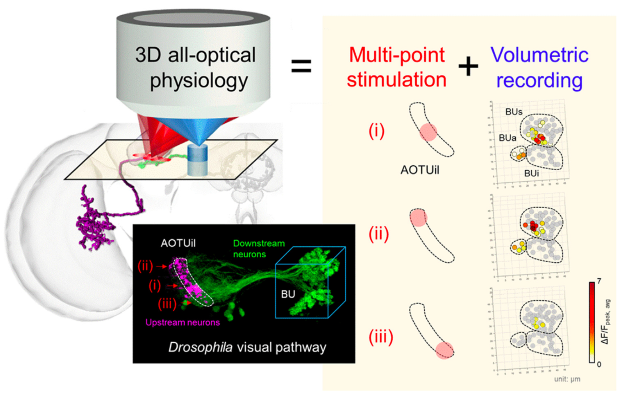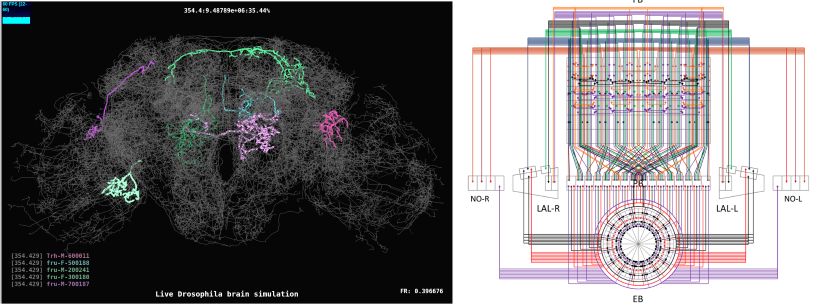| Technical Name | Visualization of brain connectomics: all-optical volumetric imaging/stimulation and spiking neural circuit models | ||
|---|---|---|---|
| Project Operator | Department of Physics, National Taiwan University / Brain Research Center, National Tsing Hua University | ||
| Project Host | 朱士維 | ||
| Summary | Constructing a functional connectome and its computational model is a crucial step toward understanding the mechanisms of brain functions. To achieve this goal, we developed two correlated technologies: (1) An all-optical physiology (AOP) that is capable of millisecond volumetric imaging and accurate stimulation in living animal brains. This system allows us to establish functional connectome and neural coding with a single-cell resolution. (2) A cellular-level spiking neural circuit simulation system that is capable of tuning itself based on the input data from the AOP system. We have demonstrated our technologies in the Drosophila late visual system and will apply them in the brains of larger species such as mice. Our technologies will greatly enhance knowledge of brain operation. |
||
| Scientific Breakthrough | Our 3D all-optical physiology (AOP) platform incorporates single-photon point stimulation and two-photon high-speed volumetric recordings (Optics Letters 2019, "Editor's pick"). We have demonstrated its effectiveness in studying the anterior visual pathway of fruit flies (iScience2019). In comparison, contemporary high-speed AOP platforms are limited to single-depth or discrete multi-plane recordings that are not suitable for studying functional connections. Our high-resolution computational model is constructed based on the combination of static connectome and AOP data, and is much more realistic than the existing models. Our work aids establishing in-vivo 3D functional connectomes and computational models of the brains, thus provides insight into the mechanisms of brain functions. |
||
| Industrial Applicability | Our fast and volumetric all-optical physiology platform can be applied not only to neuroscience for various species, but also to other fast dynamical systems. For example, the platform can improve the effectiveness of cell screening in microfluid devices by accurately observing and activating individual cells. The platform also has potential applications in pathological diagnosis of tumor samples. Our algorithms for constructing and tuning neural circuit models based on observed neural signals may be used in brain-machine interfaces and may assist in the development of the next-generation AI algorithms. |
||
| Matching Needs | - |
||
| Keyword | Multiphoton microscopy laser scanning high-speed imaging connectomics neural networks computational model spiking neuron all-optical physiology functional connections functional connections machine learning | ||
- swchu@phys.ntu.edu.tw
other people also saw







